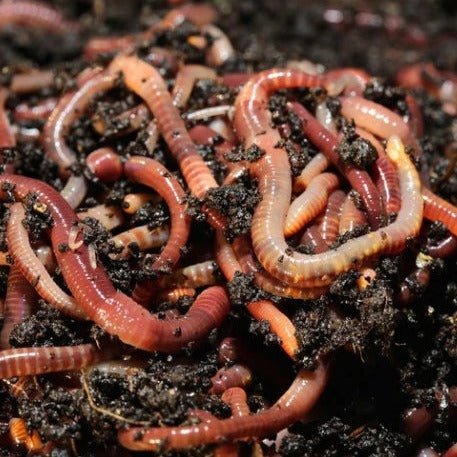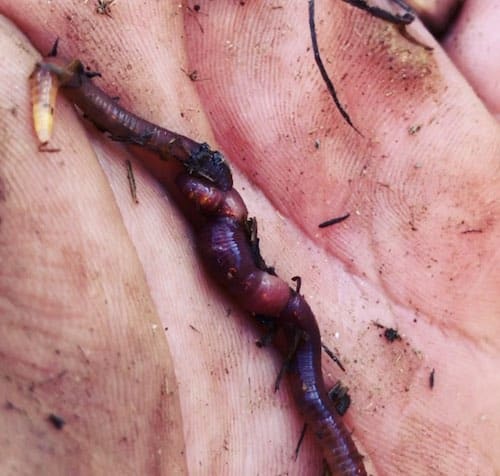Achieve a Lush Lawn Using Lake Hickory Bait Lawn Care Resources
Achieve a Lush Lawn Using Lake Hickory Bait Lawn Care Resources
Blog Article
Red Wigglers: The Unsung Heroes of Organic Waste Recycling
Red wigglers, or Eisenia fetida, serve as essential representatives in the organic waste recycling procedure, transforming discarded products into valuable vermicompost. As the globe progressively seeks remedies to deal with waste accumulation and boost agricultural productivity, recognizing the role of these worms comes to be necessary.
What Are Red Wigglers?
The amazing resilience of red wigglers, clinically known as Eisenia fetida, emphasizes their important duty in organic waste recycling. These tiny, reddish-brown earthworms are normally found in decaying organic issue, such as compost stacks and manure heaps. Lake Hickory Bait. Unlike other earthworm varieties, red wigglers flourish in nutrient-rich settings and are highly reliable at breaking down natural materials, making them vital for vermicomposting

(Red Wiggler Express)Along with their function in waste decrease, red wigglers add to dirt health by enhancing dirt framework and oygenation through their burrowing activities (Lake Hickory Bait). Their existence in composting systems not just improves disintegration prices yet also promotes a sustainable strategy to throw away management, highlighting their relevance in ecological conservation efforts
Advantages of Composting With Worms
Composting with worms, specifically red wigglers, offers many benefits that boost both waste monitoring and dirt wellness. Initially, these worms successfully damage down natural waste, transforming it into nutrient-rich vermicompost that enhances soil. This procedure increases disintegration, enabling a much faster recycling of kitchen area scraps and other organic products contrasted to standard composting techniques.
Furthermore, the vermicompost created by red wigglers is including useful bacteria, which help boost dirt structure, oygenation, and dampness retention. This improves the total health and wellness of plants, promoting strenuous development and raised returns in yards and agricultural settings. In addition, the usage of worms in composting lessens the production of greenhouse gases, such as methane, adding to a much more sustainable waste monitoring system.

Just How to Start Vermicomposting
Establishing a vermicomposting system is a simple process that can generate significant benefits for both waste management and soil enrichment. To begin, choose a suitable container, such as a plastic bin or wood box, with sufficient air flow openings to guarantee correct airflow. The dimensions should ideally be around 2 feet by 3 feet, allowing sufficient area for the worms to flourish.
Next, prepare bedding material, which can contain shredded newspaper, cardboard, or coconut coir. This bedding should be dampened to develop an ideal environment for the worms. When the bed linen is in place, introduce red wigglers (Eisenia fetida) right into the container, commonly around one extra pound of worms for every single square foot of surface.
Complying with the placement of worms, add organic waste, such as vegetables and fruit scraps, coffee premises, and crushed eggshells. Avoid adding milk, meat, or oils, as these can develop odors and attract pests. Place the container in a shaded, temperature-controlled area to maintain optimum conditions for worm activity. With these actions, you will successfully start a vermicomposting system that contributes to lasting waste administration and enriches your dirt.
Preserving a Healthy And Balanced Worm Container
(Lake Hickory Bait)Maintaining a worm container growing needs regular interest and like make sure the health of the red wigglers and the performance of the composting process. Correct maintenance starts with keeping track of the dampness levels; the bin needs to be moist yet not waterlogged. A great guideline is to keep a consistency comparable to a wrung-out sponge.
Delicately mixing the bedding and food scraps every few weeks stops compaction and makes certain that all worms have accessibility to oxygen. Additionally, it is essential to feed the worms properly.
If the container becomes also warm or cool, the worms may end up being stressed out. By vigilantly managing these factors, one can maintain a durable and efficient worm bin.
Effect On Lasting Living
The effective maintenance of a worm bin not just profits the health of red wigglers click here to read but additionally adds substantially to sustainable living techniques. By reusing organic waste, such as kitchen scraps and backyard debris, red wigglers help draw away considerable amounts of product from garbage dumps. This reduction in waste not just reduces greenhouse gas emissions yet also minimizes the ecological concern related to waste monitoring.
In addition, the castings produced by red wigglers work as a nutrient-rich organic plant food, enhancing dirt health and advertising plant growth. This all-natural alternative to chemical plant foods supports lasting agriculture and horticulture practices, minimizing reliance on synthetic inputs that can harm ecosystems. Furthermore, worm composting fosters understanding of waste management, motivating people and communities to take on more sustainable behaviors.

Final Thought
In recap, red wigglers offer as crucial contributors to organic waste reusing with their efficient decomposition of natural products. By integrating vermicomposting right into waste monitoring methods, individuals and areas can dramatically minimize waste while promoting ecological sustainability.
Report this page